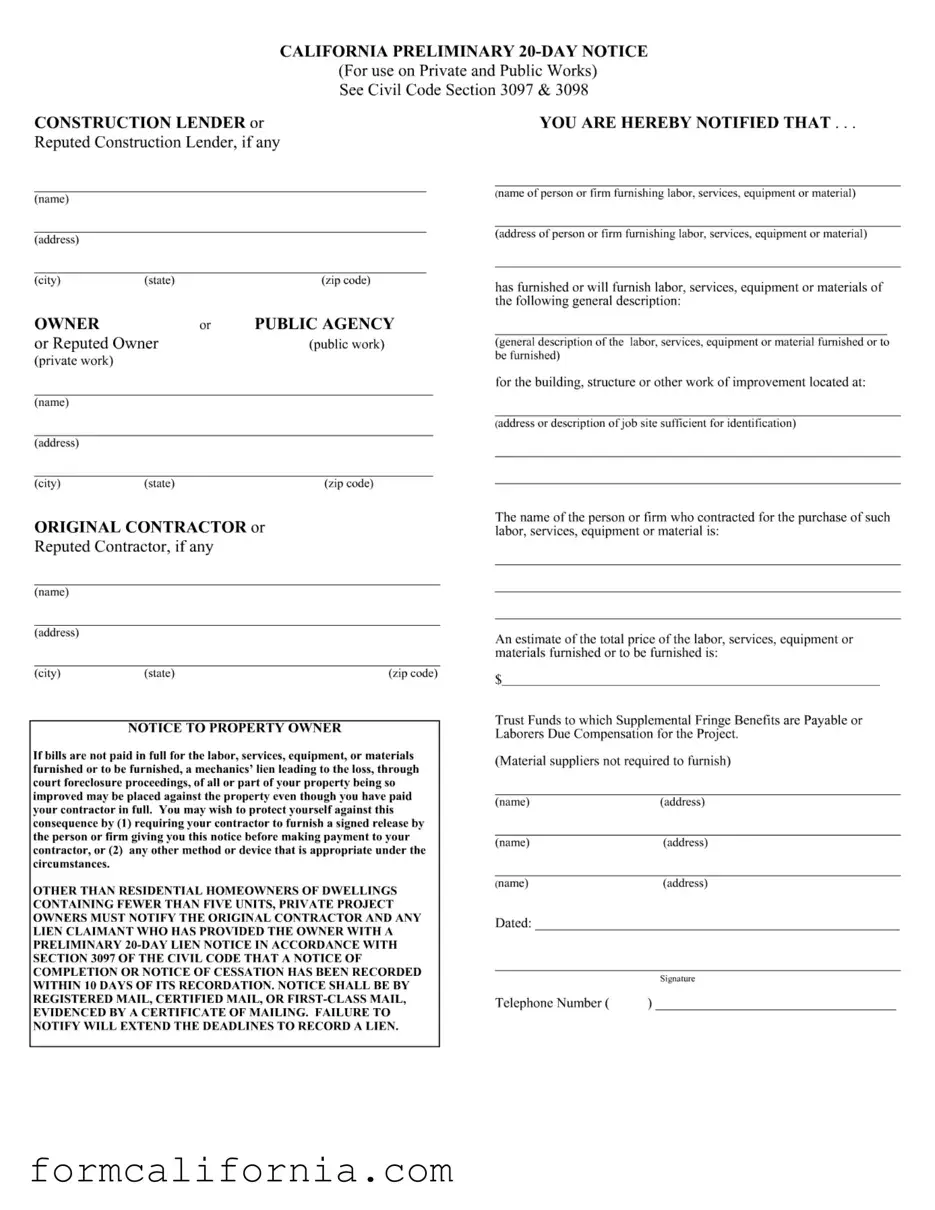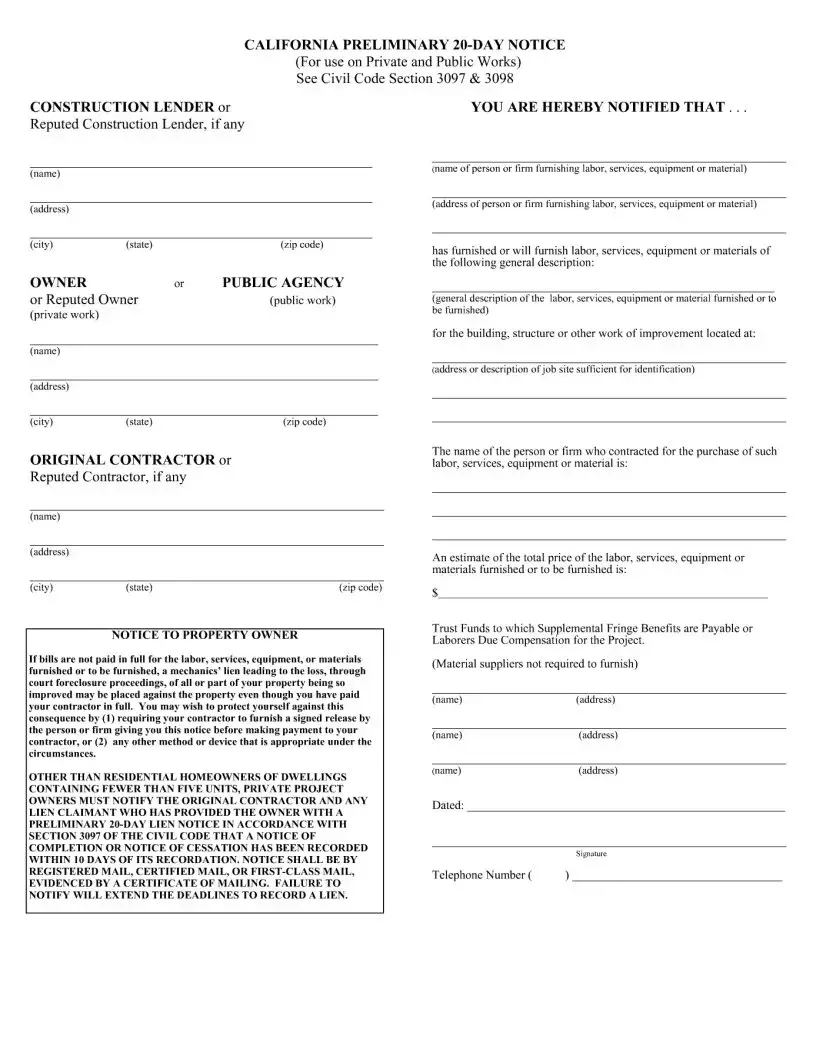The California Preliminary 20 Day Notice is an essential document within the construction industry, particularly for those working on projects in California. This notice is a precursor to many other important documents, each with its own set of functions and purposes, yet all share underlying similarities in intent and usage. Let's explore nine documents that bear resemblance to the California Prelinary 20 Day Notice in various ways.
Firstly, the Mechanic's Lien is remarkably similar to the Preliminary 20 Day Notice. Just like the 20 Day Notice, a Mechanic's Lien serves as a safeguard for contractors, subcontract offers, and workers, ensuring they are compensated for their work and materials provided in a construction project. The Preliminary Notice must be filed before one can file a Mechanic's Lien, making it a prerequisite and thus, closely linked in the process of securing payment.
Another document that shares traits with the 20 Day Notice is the Notice of Intent to Lien. This notice is basically a final warning that a Mechanics Lien will be filed if payment is not made. While it is not always mandatory, like the Preliminary 20 Day Notice, it serves a very similar purpose: to prompt payment and notify stakeholders of pending issues.
The Stop Payment Notice, is another document with a connection to the Preliminary 20 Day Notice. Used as a tool for those not directly contracted with a property owner, it freezes funds on a project until disputes can be resolved. Requiring early notification similar to the 20 Day Notice, it emphasizes the importance of early communication in resolving payment issues.
Payment Bond Claims also share parallels with the 20 Day Notice. These claims are made against a bond acquired by the principal contractor to ensure payment for subcontractors and suppliers. The Preliminary 20 Day Notice often serves as necessary groundwork, alerting parties to potential claims on the payment bond.
Release of Lien forms offer a contrast to the Notice but are interconnected in the payment process. While the Preliminary 20 Day Notice seeks to secure a right to payment, Release of Lien forms signify the fulfillment of payment and the relinquishing of any liens held on the property. They represent opposite ends of the payment cycle in construction projects.
The Conditional Waiver and Release Upon Progress Payment is another document tied to the same process. This form is used when partial payments are made during a project, indicating a temporary relinquishing of rights until final payment is received. It functions under the assumption that early notices, like the Preliminary 20 Day Notice, have been properly filed to secure those rights.
An Unconditional Waiver and Release Upon Final Payment performs a role similar to the previous document but signifies the project's completion and the final settlement of accounts. It's an acknowledgment that all payments have been made, assumably following the successful use of notices like the Preliminary 20 Day Notice to secure those payments.
The Notice of Completion, while technically a document filed by a property owner, is closely related to the Preliminary 20 Day Notice in terms of its impact on the timeline for filing liens. This document shortens the period in which a lien can be filed, making the timely filing of the Preliminary 20 Day Notice even more critical for preserving one's lien rights.
Last but not least, the Construction Contract itself serves as the foundation for all these subsequent documents. It details the work to be done, payments to be made, and timelines to be followed. The Preliminary 20 Day Notice, like all other notices and claims, ultimately stems from the terms laid out in the Construction Contract, ensuring all parties are aware of their rights and obligations from the start.
In summary, while the California Preliminary 20 Day Notice serves a uniquely initial role in the payment protection process for construction projects, it shares the common theme of communication, protection, and legal process with numerous other documents in the industry. Each, in its own way, contributes to a secure and fair working relationship among property owners, contractors, and suppliers.


